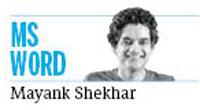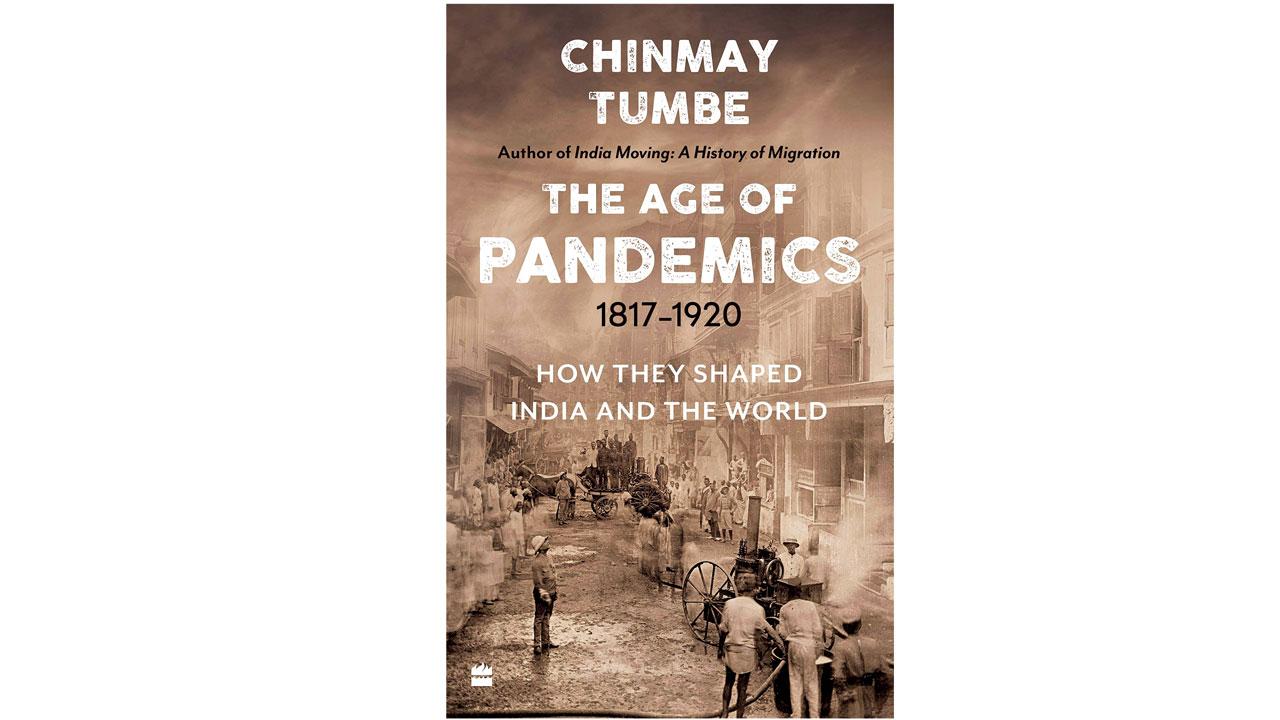Figuring how much of human history is really the history of pandemics; we just don’t know it

The Age of Pandemics (1817-1920) that I realised how much of modern history is shaped by the story of pandemics alone
 Let’s assume that over the years, two things that Bombay’s been known for are cinema and cricket. What’s the capital of subaltern Bombay cricket?
Let’s assume that over the years, two things that Bombay’s been known for are cinema and cricket. What’s the capital of subaltern Bombay cricket?
Shivaji Park? Where li’l Sachin learnt to wield the bat. Likewise, what’s the Central Perk of Bollywood? I’d say, currently, areas in and around Seven and Four Bungalows in Andheri West.
How did these iconic addresses come up? The latter, because a few Parsi families sailed from Marine Drive to Versova islands, to move into their seven and four bungalows, respectively, to escape the 1896 plague.
Likewise, Bombay Improvement Trust, established for creating ventilation, wider roads, etc. in the city, led to Shivaji Park—as response to the same plague, that led to half of Bombay (400,000) fleeing the city, thankfully through trains, that were still operational. Chawls were later built for returning workers.

But history is taught through wars, nationalism, imperialism, and public figures. In that vein, there are two men you’ve learnt about in school, and admire, regardless of your WhatsApp/political persuasions: Bal Gangadhar Tilak and Sardar Vallabhbhai Patel. How did they first emerge on the national scene?
Tilak, because he wrote extensively against the plague commissioner WC Rand’s draconian containment measures in Pune. Rand was subsequently shot dead by freedom-fighter Chapekar Bros. Tilak was jailed for a year. He became a national hero.
Patel, similarly, made a name for himself first working tirelessly in plague relief measures, often in personal capacity, although also as a member of Ahmedabad’s municipality. Think of him as ‘Sonu Sood of COVID-19’, as author Chinmay Tumbe cheekily describes it in an interview!
In fact, it is only through Tumbe’s book, The Age of Pandemics (1817-1920)—looking closely at plague, cholera, and Spanish Flu across the world, with focus on India—that I realised how much of modern history is shaped by the story of pandemics alone (defined as excessive mortality across two continents, minimum).
These pandemics wiped out nations/cities/populations in percentages. Such that a 17th Century friar, battling plague himself, described it as God’s way of ensuring “good governance”: how else will God feed so many people?

It is only through Chinmay Tumbe’s book
In the mid 1800s, understandably, the public debate in England centred on which is worse—cholera or war? The former having caused 20,000 deaths, 1793-1815; the latter, 70,000 deaths, between 1848-49!
Which is a debate on whether humans should spend on weapons and soldiers, or hospitals and doctors, isn’t it?
Another matter is that while there are proud gallantry awards for taking on other humans, I don’t find equal pageantry for medical staff, who repeatedly save lives, risking their own, especially with contagious diseases. Tell me who you need more.
And yet, look at other numbers in Tumbe’s book. The 1896 plague, until 1920, killed 12 million Indians. The 1817 ‘India Cholera’ pandemic, until 1920, wiped out 40 million Indians, ie 5 per cent of all deaths in the sub-continent. The period being decades after decades, of waves and troughs, trial and error, for prevention and cure, evacuation and inoculation.
Conversely, the 1918 Spanish Flu, with evidences pointing to its origin in Kansas, American mid-west—called ‘mari’, ‘manmodi’, by desis—took away 20 frickin’ million Indians, in a span of few months during the pandemic’s second wave in the last quarter of 1918, starting September.
Mahatma Gandhi, who coined the phrase ‘cleanliness is next to godliness’ in the context of plague, also apparently suffered from Spanish Flu. Although Tumbe asserts it was dysentery. Either way, he lost his son Hiralal’s wife, Gulab, and his grandson, Shanti, to the pandemic.
The great Hindi writer Suryakant Tripathi ‘Nirala’, who also lost his wife and family members to Spanish Flu, observed the Ganga riverbank in UP “swollen with dead bodies”. The American senate discussed the Indian government’s abysmal response, leading to 6 million deaths (official death figures then).
Incidentally, Hyderabad’s Charminar came up in 1511, to commemorate the eradication of plague. There are temples in India—Oladevi in Bengal, Lala Hardoul in Bundelkhand—dedicated to deities associated with cholera.
Up until COVID-19 struck India (and the world) in March 2020, I hadn’t read anything on the Spanish Flu pandemic, let alone its similarly ferocious, man-eating spread in 1918. Certainly not in school text.
Tumbe says this has to do with how short the pandemic lasted. That it coincided with India’s freedom movement (WWI in the West). And how long after, the influenza reappeared (about 100 years). In which case, the policy response will always be four-step: denial, confusion, acceptance, and erasure (of memory).
Like the second wave of Spanish Flu, the second COVID-19 wave in India, roughly April-May 2021, was a nightmare, with practically everyone I know waking up each day to news of bereavement—of a direct loved one, or someone within two degrees of separation. We don’t even know the exact fatality count. Who cares?
Looking around, it appears to me that we’ve repressed the memory of that cloud of death, for the time being. That’s how humans “adjust”, perfunctorily move on, I guess.
I write this on May 31, 2022. Having recently returned from a college alumni meet, looking for my annual, old friend, at these dos: “Can’t see Partha,” I ask. “He’s no more,” I am told. Out of dread, I don’t check on others. How will we grieve/remember them?
Mayank Shekhar attempts to make sense of mass culture. He tweets @mayankw14
Send your feedback to mailbag@mid-day.com
The views expressed in this column are the individual’s and don’t represent those of the paper.
 Subscribe today by clicking the link and stay updated with the latest news!" Click here!
Subscribe today by clicking the link and stay updated with the latest news!" Click here!










